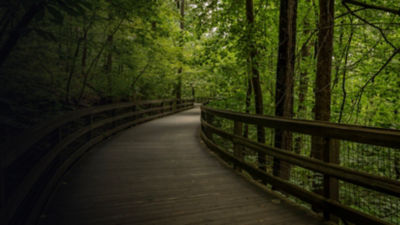
The central Virginia-based Rivanna Conservation Alliance has a singular mission: to make the Rivanna River better. And more specifically, to make this artery atop the Chesapeake Bay watershed a better asset for kids, better for kayakers, better for aquatic species, and better for the community. Founded in 2016 when two longstanding nonprofit organizations merged (StreamWatch and the Rivanna Conservation Society), the alliance works with various community partners to conserve the Rivanna River and its tributaries through scientific stream monitoring, active restoration and advocacy.
It’s an important job as the Rivanna is the largest tributary to the James River above Richmond, with a watershed that covers 766 square miles. The banks of the river were originally home to the Monacan Indian Nation, but the Rivanna became the source for agriculture once the Europeans settled in the area. Today, the Rivanna is home to endangered species like the James Spinymussel. It’s also the anchor to a robust public park system throughout Charlottesville and the surrounding area as well as a hotbed of recreation for paddlers, swimmers and anglers.
“It’s amazing how popular the Rivanna has become during the pandemic,” says Lisa Wittenborn, executive director for the Rivanna Conservation Alliance. “People were looking for a way to get outside and escape the heat, and they rediscovered this river right in their backyards.” Here are five ways the Rivanna Conservation Alliance (RCA) is engaging (and re-engaging) the community to conserve the Rivanna River and its tributaries.
Getting Outside During the Pandemic
In September 2020, The RCA organized the first River Round-Up as a safe way for the community to give back to this newly “rediscovered” local waterway. Over the first two years, the RCA recruited 245 volunteers who cleaned up 67 miles of streams and trails, removing 192 tires and 213 large trash bags of refuse from the watershed. During the third roundup this past September, RCA volunteers cleaned an additional 27 miles of streams and trails, removing 148 bags of trash and 173 tires.
Monitoring the Water
The RCA is certified to collect stream data at the same level as the state environmental agency. In other words, trained volunteers and staff are doing scientific research regarding stream health and bacteria levels within the Rivanna and its tributaries. “Our watershed is one of the most monitored in the entire state,” says Wittenborn. “And it’s not just our staff out there. We have 100 trained volunteers out there doing the research.”
That sort of thorough monitoring results in data that can be used by the local government and reported to the EPA. Not only does that critical information help inform legislation, it also helps the community better understand the overall health of the river. For example, the RCA monitors levels of bacteria and reports the level of E. coli at popular recreation sites every weekend during the summer.































